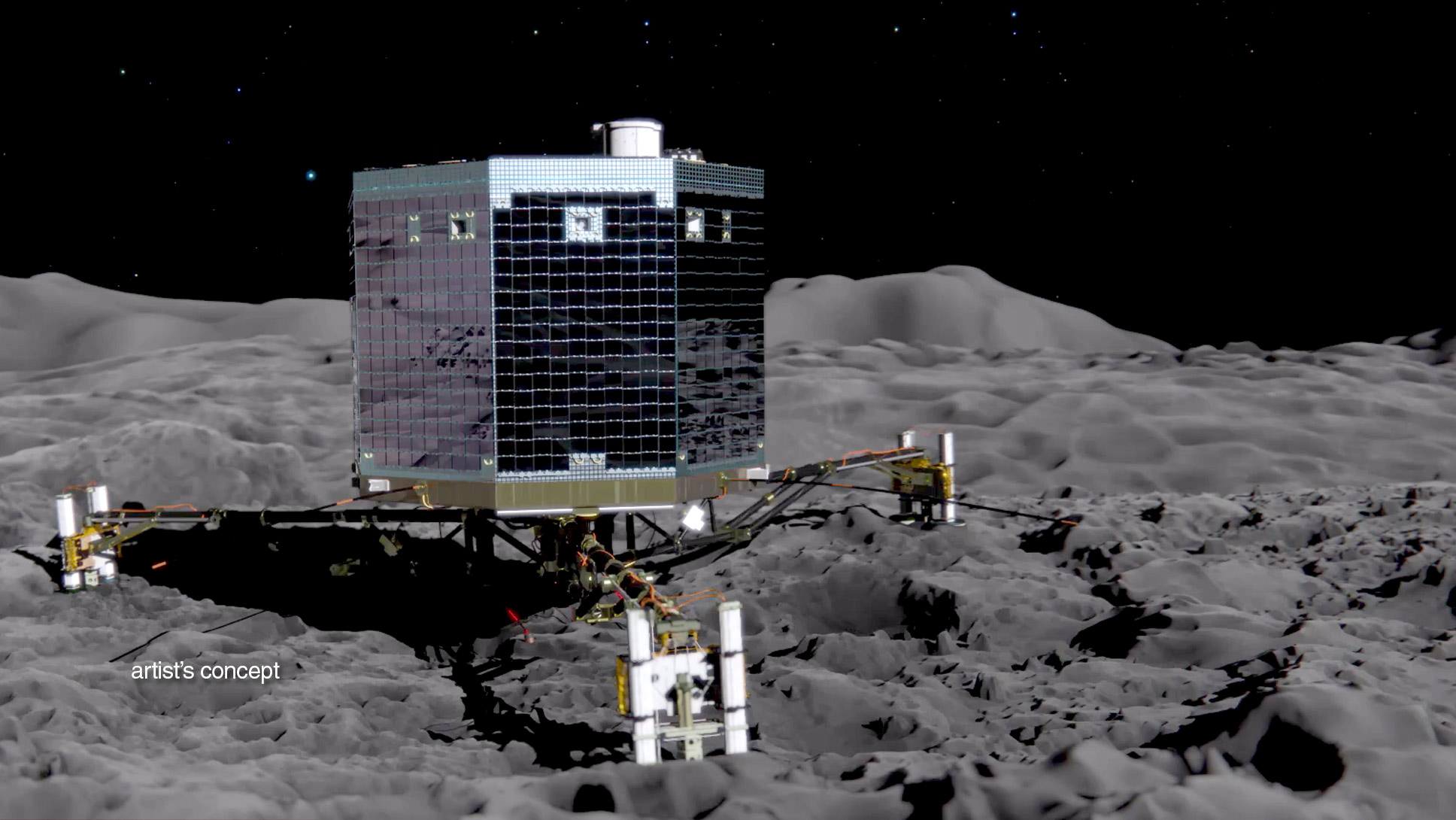
Craveology Cafe and the North Star Science Store are temporarily closed for renovation.

By David Harker, Associate Research Scientist, UCSD Center for Astrophysics and Space Sciences (CASS)
On March 2, 2004, the European Space Agency (ESA) launched the Rosetta Mission. The goal for this mission was for the Rosetta spacecraft to rendezvous with comet 67P/Churymov–Gerasimenko, which was 280 million miles away from Earth. To put this into perspective, the Earth is about 93 million miles away from the Sun. So at the point of rendezvous, comet 67P was three times the distance away from the Earth as the Earth is from the Sun.
Rosetta went into orbit around comet 67P on September 10, 2014. It took ten years for Rosetta to reach the comet, traveling as far out as the orbital path of Jupiter! Here is a cool video of the path Rosetta took.
The Rosetta spacecraft deployed a small probe, Philae, which made history on November 12, 2014, by successfully landing on the surface of the comet.
Philae's landing onto comet 67P was not without its mishaps. It is thought that the initial landing was too soft to deploy the probes' harpoons, which would have fastened it to the surface. The tiny lander—about the size of a dishwasher—bounced twice before finally coming to a rest. The first bounce lasted close to an hour and took Philae a kilometer off the surface of the comet!
The escape velocity of comet 67P is only 1.1 mph. This is the velocity you would need to escape from the comet's gravity. Compare that with the Earth's escape velocity, which is 25,000 mph! You could quite literally leap off the comet.
When Philae finally did come to a rest, it ended up in an unfavorable orientation. The probe’s solar panels were only receiving a little more than an hour of sunlight during each 12-hour rotation of the comet. It was hoped that Philae would receive six to seven hours of sunlight every rotation of the comet, which would fuel the lander’s batteries and allow its activities to be carried out over three months. Instead, because of the limited sunlight, Philae was only able to operate for about 60 hours before its batteries depleted.
During those 60 hours, a wealth of scientific data was downlinked to Earth for analysis, such as information about the comet’s atmosphere and composition. As the mission continues and 67P approaches perihelion, its closest approach to the Sun, scientists are hoping that the increased sunlight will awaken Philae and its mission can continue. Even without Philae, the main Rosetta spacecraft is still orbiting the comet and will continue to collect data to help us learn more about comet 67P and the nature of comets in our solar system.